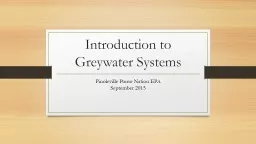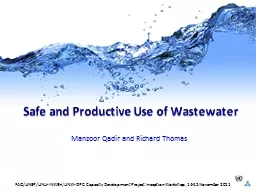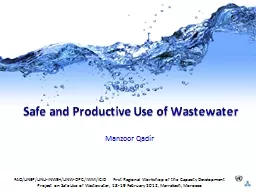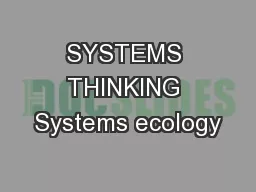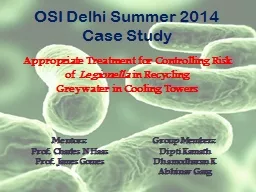PPT-Introduction to Greywater Systems
Author : kittie-lecroy | Published Date : 2017-12-01
Pinoleville Pomo Nation EPA September 2015 What is grey water Theres three types of water White Water This is clean water It comes from your tap and can be used
Presentation Embed Code
Download Presentation
Download Presentation The PPT/PDF document "Introduction to Greywater Systems" is the property of its rightful owner. Permission is granted to download and print the materials on this website for personal, non-commercial use only, and to display it on your personal computer provided you do not modify the materials and that you retain all copyright notices contained in the materials. By downloading content from our website, you accept the terms of this agreement.
Introduction to Greywater Systems: Transcript
Pinoleville Pomo Nation EPA September 2015 What is grey water Theres three types of water White Water This is clean water It comes from your tap and can be used for drinking and food preparation. bigfoot. “. Sustainable . retrofit. . Refurbishment. in . Žirmūnų st.11. 6. Mantas . bučiūnas. Martin. . Ojamaa. . Othman. . Khebbab. _Content. 1_. T. he big foot. 2_General information. 3_Energy efficiency. Contact us at: contact.omics@omicsonline.org. OMICS Group International through its Open Access Initiative is committed to make genuine and reliable contributions to the scientific community. OMICS Group hosts over . 1.2 What’s in it for you?. 1.3 Ethics of analysis and use of systems, data . and information. Course Topics Overview. Unit 1: Introduction. Unit . 2: . Systems . Analysis. Unit . 3: . Organizational Systems. Manzoor Qadir and Richard Thomas. FAO/UNEP/UNU-INWEH/UNW-DPC Capacity Development Project Inception Workshop, 14-15 November 2011 . Wastewater Use in. . AAAA. A. griculture . A. groforestry. A. quaculture. Chapter 20. 20-. 1. Learning Objectives. Explain the five phases of the systems development life cycle.. Discuss the people involved in systems development and the roles they play.. Explain the importance of systems development planning and describe planning techniques.. South West Chicken Association, April 2013. Agenda. April 2013. Introduction. Challenges Facing Industry. Conventional Heating. Hot Water Heating Systems. Optimal Ventilation. Fuel Types. Agenda. April 2013. Manzoor Qadir . FAO/UNEP/UNU-INWEH/UNW-DPC/IWMI/ICID First Regional Workshop of the Capacity . Development Project . on Safe Use of Wastewater, 18-19 February 2012, Marrakesh, Morocco . Wastewater Use in. Module Outline. Introduction to Embedded Systems. CPUs . vs. . MCUs . vs. Embedded . Systems. Examples of Embedded Systems. Options for Building Embedded Systems. Features of Embedded Systems. Introduction to Internet . Types of Systems. Types of Systems. A handheld can opener is a device that makes life easier. . The task of a can opener is quite simple—it must safely remove the lid of a can.. A can opener is an example of a system.. Copyright © 2012 Pearson Education, Inc. publishing as Prentice Hall. 20-. 1. Learning Objectives. Explain the five phases of the systems development life cycle.. Discuss the people involved in systems development and the roles they play.. Neža Orel. INTRODUCTION. A system is a complex whole the functioning of which depends on its parts and the interactions between those . parts. (Jackson M.C., 2003). .. A set . of. . components. . The global multimodal imaging market was worth USD 2.5 billion in 2020 and is further projected to reach USD 3.4 billion by the year 2027, growing at the CAGR of 4.5% in the forecast period. Appropriate Treatment for Controlling Risk of . Legionella. in Recycling. Greywater. in Cooling Towers. Group Members: . Dipti. . Kamath. Dhamodharan. K. Abhinav. . Garg. Mentors: . Prof. Charles . Commercial . and . Residential Buildings. Prepared by: . Yusi. Jin, Graduate Student. Supervising Professor : Dr. Massoud Pirbazari. Sonny . Astani. Department of Civil and Environmental Engineering.
Download Document
Here is the link to download the presentation.
"Introduction to Greywater Systems"The content belongs to its owner. You may download and print it for personal use, without modification, and keep all copyright notices. By downloading, you agree to these terms.
Related Documents

